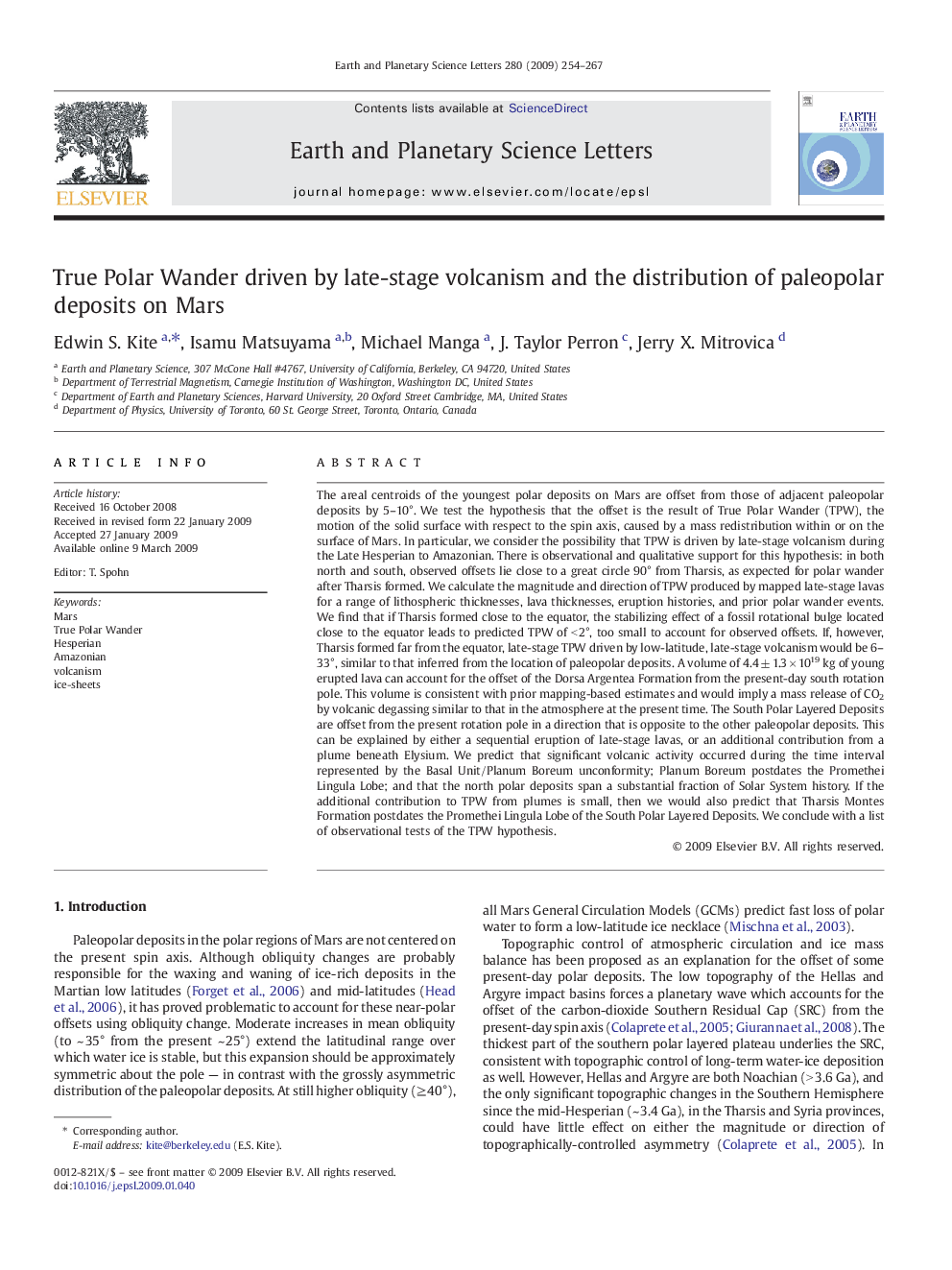| کد مقاله | کد نشریه | سال انتشار | مقاله انگلیسی | نسخه تمام متن |
|---|---|---|---|---|
| 4678919 | 1634876 | 2009 | 14 صفحه PDF | دانلود رایگان |

The areal centroids of the youngest polar deposits on Mars are offset from those of adjacent paleopolar deposits by 5–10°. We test the hypothesis that the offset is the result of True Polar Wander (TPW), the motion of the solid surface with respect to the spin axis, caused by a mass redistribution within or on the surface of Mars. In particular, we consider the possibility that TPW is driven by late-stage volcanism during the Late Hesperian to Amazonian. There is observational and qualitative support for this hypothesis: in both north and south, observed offsets lie close to a great circle 90° from Tharsis, as expected for polar wander after Tharsis formed. We calculate the magnitude and direction of TPW produced by mapped late-stage lavas for a range of lithospheric thicknesses, lava thicknesses, eruption histories, and prior polar wander events. We find that if Tharsis formed close to the equator, the stabilizing effect of a fossil rotational bulge located close to the equator leads to predicted TPW of < 2°, too small to account for observed offsets. If, however, Tharsis formed far from the equator, late-stage TPW driven by low-latitude, late-stage volcanism would be 6–33°, similar to that inferred from the location of paleopolar deposits. A volume of 4.4 ± 1.3 × 1019 kg of young erupted lava can account for the offset of the Dorsa Argentea Formation from the present-day south rotation pole. This volume is consistent with prior mapping-based estimates and would imply a mass release of CO2 by volcanic degassing similar to that in the atmosphere at the present time. The South Polar Layered Deposits are offset from the present rotation pole in a direction that is opposite to the other paleopolar deposits. This can be explained by either a sequential eruption of late-stage lavas, or an additional contribution from a plume beneath Elysium. We predict that significant volcanic activity occurred during the time interval represented by the Basal Unit/Planum Boreum unconformity; Planum Boreum postdates the Promethei Lingula Lobe; and that the north polar deposits span a substantial fraction of Solar System history. If the additional contribution to TPW from plumes is small, then we would also predict that Tharsis Montes Formation postdates the Promethei Lingula Lobe of the South Polar Layered Deposits. We conclude with a list of observational tests of the TPW hypothesis.
Journal: Earth and Planetary Science Letters - Volume 280, Issues 1–4, 15 April 2009, Pages 254–267